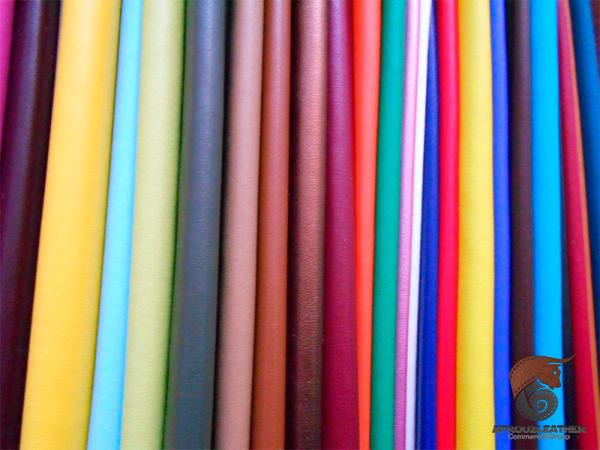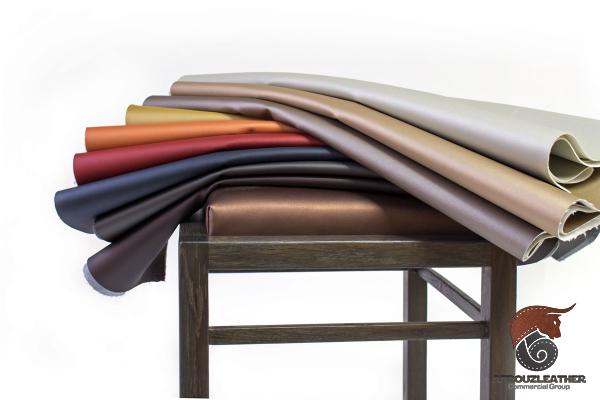The leather industry plays a vital role in the global economy, with various sectors such as fashion, upholstery, automotive, and footwear relying heavily on leather products. The cost of leather raw materials is a critical factor that affects the profitability and competitiveness of businesses within these sectors. In this article, we will delve into the factors influencing leather raw material costs, examine recent trends, and discuss how these costs impact businesses operating in the leather industry. Factors Affecting Leather Raw Material Costs: 1. Supply and Demand: The availability of raw materials, particularly hides and skins, greatly affects their price. The demand for leather is influenced by various factors, including economic conditions, fashion trends, and consumer preferences. Additionally, supply is impacted by factors such as livestock production levels, processing capacities, and government regulations. 2. Animal Husbandry Practices: The quality and availability of hides and skins are determined by livestock farming practices. Factors such as breeding, feeding, and healthcare directly impact the size, thickness, and quality of the hides and skins produced. Countries or regions known for superior animal husbandry practices often have a competitive advantage in terms of access to high-quality raw materials. 3. Processing and Tanning Methods: The cost of leather raw materials also depends on the processing and tanning methods employed. Different processing techniques, such as wet blue, wet white, or vegetable tanning, can impact the quality, durability, and appearance of the final product. Each method has distinct cost implications, including the use of chemicals, water, energy, and labor. 4. Geographic Location: The cost of leather raw materials varies depending on the geographic location of the business. Transportation costs, import duties, taxes, and local market dynamics all contribute to regional price differences. For example, businesses in countries with large livestock populations and developed tanning industries may have a competitive advantage in terms of lower raw material costs. Trends in Leather Raw Material Costs: 1. Fluctuating Livestock Prices: Livestock prices have a significant impact on the cost of leather raw materials. Factors such as feed costs, weather conditions, disease outbreaks, and government policies can lead to price fluctuations. For example, a sudden increase in feed prices or a decline in livestock numbers due to a disease outbreak can cause a rise in leather material costs. 2. Sustainability and Environmental Considerations: Increasing concerns over sustainability and environmental impact have led to a growing demand for ethically sourced and environmentally friendly leather. Businesses that adopt sustainable practices, such as using low-impact tanning methods or supporting animal welfare, may incur higher acquisition costs for raw materials. As consumer awareness and preference for sustainable products continue to rise, these costs could become more significant for businesses. 3. Price Volatility of Chemical Inputs: Leather production involves the use of various chemicals, including tanning agents, dyes, and finishing agents. The prices of these chemicals are subject to volatility, depending on factors such as raw material availability, global demand, and geopolitical events. Fluctuating chemical prices can directly impact the overall cost of leather raw materials.
leather
 4. Currency Fluctuations: The global nature of the leather industry means that businesses often engage in international trade. Currency fluctuations can play a significant role in determining the cost of imported raw materials. If a business’s domestic currency weakens against the currency of the country from which it imports its raw materials, the cost of these materials increases. This can squeeze profit margins and make businesses more vulnerable to economic uncertainties. Implications for the Leather Industry: 1. Profitability and Competitiveness: The cost of leather raw materials directly affects the profitability and competitiveness of businesses in the industry. Higher material costs can erode profit margins, particularly in a highly competitive market. Businesses must consider cost-effective sourcing strategies, continuous cost optimization efforts, and market demand trends to maintain a competitive advantage. 2. Pricing and Consumer Behavior: Fluctuations in leather raw material costs can have an impact on the final product’s price. Higher material costs might be passed onto consumers, but businesses must exercise caution to avoid pricing themselves out of the market. Consumer behavior is influenced by price sensitivity, perceived value, and the availability of alternative materials. Businesses must strike a balance between cost management and meeting consumer expectations. 3. R&D and Innovation: To mitigate the impact of rising raw material costs, businesses in the leather industry must invest in research and development (R&D) and innovation. Developing alternative and sustainable materials, improving production processes, and exploring new technologies can help reduce dependency on traditional leather raw materials and create opportunities for cost reduction. 4. Collaboration and Supply Chain Management: Collaboration and effective supply chain management are vital in navigating the complexities of the leather industry. Building strong relationships with suppliers, monitoring market trends, and integrating sustainability considerations throughout the supply chain can help identify opportunities for cost savings and ensure a reliable and responsible supply of raw materials. Conclusion: The cost of leather raw materials is a significant consideration for businesses operating in the global leather industry. Understanding the factors influencing these costs and keeping abreast of industry trends is essential for maintaining profitability and competitiveness. With fluctuating livestock prices, sustainability considerations, volatile chemical input costs, and currency fluctuations, businesses must adapt and implement effective strategies to manage raw material costs, drive innovation, and meet the changing demands of consumers in a socially and environmentally responsible manner.I. Impact of Raw Material Costs on Profitability The cost of leather raw materials has a direct impact on the profitability of businesses in the leather industry. As raw material prices increase, profit margins may be squeezed, particularly for businesses operating in highly competitive markets. Therefore, it is crucial for companies to carefully manage their raw material costs to maintain profitability.
4. Currency Fluctuations: The global nature of the leather industry means that businesses often engage in international trade. Currency fluctuations can play a significant role in determining the cost of imported raw materials. If a business’s domestic currency weakens against the currency of the country from which it imports its raw materials, the cost of these materials increases. This can squeeze profit margins and make businesses more vulnerable to economic uncertainties. Implications for the Leather Industry: 1. Profitability and Competitiveness: The cost of leather raw materials directly affects the profitability and competitiveness of businesses in the industry. Higher material costs can erode profit margins, particularly in a highly competitive market. Businesses must consider cost-effective sourcing strategies, continuous cost optimization efforts, and market demand trends to maintain a competitive advantage. 2. Pricing and Consumer Behavior: Fluctuations in leather raw material costs can have an impact on the final product’s price. Higher material costs might be passed onto consumers, but businesses must exercise caution to avoid pricing themselves out of the market. Consumer behavior is influenced by price sensitivity, perceived value, and the availability of alternative materials. Businesses must strike a balance between cost management and meeting consumer expectations. 3. R&D and Innovation: To mitigate the impact of rising raw material costs, businesses in the leather industry must invest in research and development (R&D) and innovation. Developing alternative and sustainable materials, improving production processes, and exploring new technologies can help reduce dependency on traditional leather raw materials and create opportunities for cost reduction. 4. Collaboration and Supply Chain Management: Collaboration and effective supply chain management are vital in navigating the complexities of the leather industry. Building strong relationships with suppliers, monitoring market trends, and integrating sustainability considerations throughout the supply chain can help identify opportunities for cost savings and ensure a reliable and responsible supply of raw materials. Conclusion: The cost of leather raw materials is a significant consideration for businesses operating in the global leather industry. Understanding the factors influencing these costs and keeping abreast of industry trends is essential for maintaining profitability and competitiveness. With fluctuating livestock prices, sustainability considerations, volatile chemical input costs, and currency fluctuations, businesses must adapt and implement effective strategies to manage raw material costs, drive innovation, and meet the changing demands of consumers in a socially and environmentally responsible manner.I. Impact of Raw Material Costs on Profitability The cost of leather raw materials has a direct impact on the profitability of businesses in the leather industry. As raw material prices increase, profit margins may be squeezed, particularly for businesses operating in highly competitive markets. Therefore, it is crucial for companies to carefully manage their raw material costs to maintain profitability.
Specifications of leather
 To mitigate the impact of rising raw material costs on profitability, businesses can focus on optimizing their supply chains and sourcing strategies. This includes identifying reliable suppliers, negotiating favorable pricing agreements, and implementing cost-effective inventory management practices. By ensuring a streamlined supply chain, businesses can reduce potential disruptions and price fluctuations, which can ultimately impact profitability. Furthermore, businesses can explore alternative sourcing options and materials to reduce dependency on traditional leather raw materials. For example, they could consider incorporating recycled or synthetic materials into their product offerings. Investing in research and development (R&D) and innovation can also help businesses identify more cost-effective and sustainable raw material alternatives. II. Price Considerations and Consumer Behavior Fluctuations in leather raw material costs can have implications for pricing strategies and consumer behavior. When raw material costs increase, businesses may face a difficult decision regarding whether to pass on the additional costs to consumers or absorb them internally. Increasing product prices may impact consumer purchasing decisions, particularly if there are alternative materials available at lower prices. Businesses must carefully balance price increases with the perceived value of their products, ensuring that consumers are willing to pay the higher prices for the quality and desirability associated with leather products. Consumer behavior is influenced by various factors, including price sensitivity, brand reputation, and the availability of alternatives. Businesses must monitor consumer trends and preferences to ensure that pricing strategies align with market demand. By offering competitive prices and understanding consumer expectations, businesses can effectively navigate the challenges posed by fluctuating raw material costs. III. Research and Development (R&D) and Innovation To address the challenges posed by rising raw material costs, businesses in the leather industry should invest in R&D and innovation. By doing so, they can develop alternative materials, improve production processes, and explore new technologies that reduce dependency on traditional leather raw materials. For example, businesses might invest in the development of sustainable materials that can mimic the look and feel of leather, such as plant-based or recycled materials. These alternatives can not only mitigate the impact of raw material costs but also align with consumer demands for more environmentally friendly products. Improving production processes through innovation can also lead to cost savings. Businesses can leverage technology to optimize efficiency, reduce waste, and enhance product quality. This, in turn, can help offset the increased costs associated with raw materials. IV. Collaboration and Supply Chain Management Collaboration and effective supply chain management are essential in navigating the complexities of the leather industry. Building strong relationships with suppliers and other stakeholders in the supply chain can provide businesses with a competitive advantage.
To mitigate the impact of rising raw material costs on profitability, businesses can focus on optimizing their supply chains and sourcing strategies. This includes identifying reliable suppliers, negotiating favorable pricing agreements, and implementing cost-effective inventory management practices. By ensuring a streamlined supply chain, businesses can reduce potential disruptions and price fluctuations, which can ultimately impact profitability. Furthermore, businesses can explore alternative sourcing options and materials to reduce dependency on traditional leather raw materials. For example, they could consider incorporating recycled or synthetic materials into their product offerings. Investing in research and development (R&D) and innovation can also help businesses identify more cost-effective and sustainable raw material alternatives. II. Price Considerations and Consumer Behavior Fluctuations in leather raw material costs can have implications for pricing strategies and consumer behavior. When raw material costs increase, businesses may face a difficult decision regarding whether to pass on the additional costs to consumers or absorb them internally. Increasing product prices may impact consumer purchasing decisions, particularly if there are alternative materials available at lower prices. Businesses must carefully balance price increases with the perceived value of their products, ensuring that consumers are willing to pay the higher prices for the quality and desirability associated with leather products. Consumer behavior is influenced by various factors, including price sensitivity, brand reputation, and the availability of alternatives. Businesses must monitor consumer trends and preferences to ensure that pricing strategies align with market demand. By offering competitive prices and understanding consumer expectations, businesses can effectively navigate the challenges posed by fluctuating raw material costs. III. Research and Development (R&D) and Innovation To address the challenges posed by rising raw material costs, businesses in the leather industry should invest in R&D and innovation. By doing so, they can develop alternative materials, improve production processes, and explore new technologies that reduce dependency on traditional leather raw materials. For example, businesses might invest in the development of sustainable materials that can mimic the look and feel of leather, such as plant-based or recycled materials. These alternatives can not only mitigate the impact of raw material costs but also align with consumer demands for more environmentally friendly products. Improving production processes through innovation can also lead to cost savings. Businesses can leverage technology to optimize efficiency, reduce waste, and enhance product quality. This, in turn, can help offset the increased costs associated with raw materials. IV. Collaboration and Supply Chain Management Collaboration and effective supply chain management are essential in navigating the complexities of the leather industry. Building strong relationships with suppliers and other stakeholders in the supply chain can provide businesses with a competitive advantage.
buy leather
 Collaborating with suppliers can help businesses negotiate favorable pricing agreements and ensure a reliable supply of high-quality raw materials. Maintaining open lines of communication and fostering mutually beneficial partnerships can lead to long-term cost savings and improved operational efficiency. In addition, businesses should monitor market trends and integrate sustainability considerations throughout the supply chain. By optimizing transportation routes, adopting sustainable practices, and ensuring compliance with relevant regulations, businesses can reduce costs and enhance their reputation as responsible and environmentally conscious organizations. V. Currency Fluctuations and International Trade The global nature of the leather industry means that businesses often engage in international trade, which exposes them to currency fluctuations. When a business’s domestic currency weakens against the currency of the country from which it imports its raw materials, the cost of these materials increases, affecting the overall cost of production. Currency fluctuations can introduce uncertainty and add complexity to raw material cost management. To mitigate this risk, businesses can adopt hedging strategies and closely monitor exchange rates. By planning ahead and diversifying their sourcing options, businesses can minimize the potential impact of currency fluctuations on raw material costs. Conclusion The cost of leather raw materials is a crucial consideration for businesses in the leather industry. Understanding the factors influencing these costs and implementing effective strategies to manage them is essential for maintaining profitability, competitiveness, and sustainability. By optimizing supply chains, exploring alternative materials, investing in R&D and innovation, and fostering collaboration throughout the supply chain, businesses can navigate the challenges posed by fluctuating raw material costs. Additionally, by carefully considering pricing strategies and consumer behavior, businesses can strike a balance between cost management and meeting consumer expectations. In an era of increased sustainability concerns, businesses must prioritize ethical sourcing practices and environmentally friendly alternatives to traditional leather raw materials. By embracing innovation and adopting responsible practices, businesses can position themselves for long-term success in the ever-evolving leather industry.
Collaborating with suppliers can help businesses negotiate favorable pricing agreements and ensure a reliable supply of high-quality raw materials. Maintaining open lines of communication and fostering mutually beneficial partnerships can lead to long-term cost savings and improved operational efficiency. In addition, businesses should monitor market trends and integrate sustainability considerations throughout the supply chain. By optimizing transportation routes, adopting sustainable practices, and ensuring compliance with relevant regulations, businesses can reduce costs and enhance their reputation as responsible and environmentally conscious organizations. V. Currency Fluctuations and International Trade The global nature of the leather industry means that businesses often engage in international trade, which exposes them to currency fluctuations. When a business’s domestic currency weakens against the currency of the country from which it imports its raw materials, the cost of these materials increases, affecting the overall cost of production. Currency fluctuations can introduce uncertainty and add complexity to raw material cost management. To mitigate this risk, businesses can adopt hedging strategies and closely monitor exchange rates. By planning ahead and diversifying their sourcing options, businesses can minimize the potential impact of currency fluctuations on raw material costs. Conclusion The cost of leather raw materials is a crucial consideration for businesses in the leather industry. Understanding the factors influencing these costs and implementing effective strategies to manage them is essential for maintaining profitability, competitiveness, and sustainability. By optimizing supply chains, exploring alternative materials, investing in R&D and innovation, and fostering collaboration throughout the supply chain, businesses can navigate the challenges posed by fluctuating raw material costs. Additionally, by carefully considering pricing strategies and consumer behavior, businesses can strike a balance between cost management and meeting consumer expectations. In an era of increased sustainability concerns, businesses must prioritize ethical sourcing practices and environmentally friendly alternatives to traditional leather raw materials. By embracing innovation and adopting responsible practices, businesses can position themselves for long-term success in the ever-evolving leather industry.

Your comment submitted.